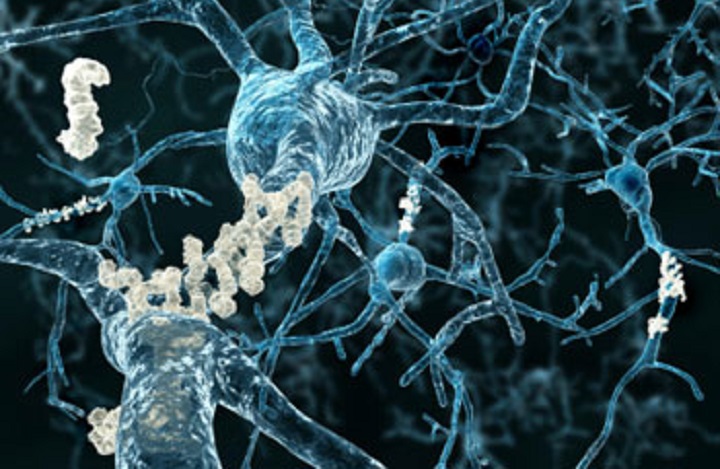
Alzheimer's is one of the most widespread of neurodegenerative diseases, accounting for 60% to 70% of dementia cases. Although it mainly affects people over the age of 65, between 4% and 6% of cases are the result of early-onset Alzheimer's. The disease usually starts slowly, but gets steadily worse over time and continues until the sufferer succumbs to an increasing loss of memory, bodily functions and, eventually, death.
According to Alzheimer's Disease International, in 2013 there were roughly 35 million people suffering from Alzheimer's worldwide. This number is expected to reach an estimated 75.6 million by 2030, and 135.5 million by 2050, owing to a combination of increased life-expectancy and general health. Not only are the causes of this disease poorly understood, but at present, there is no known cure.
Luckily, a significant portion of biomedical research today is dedicated to finding new and innovative treatments. And in a recently published paper, which appeared in the journal Science Translation Medicine, researchers at the University of Queensland describe how they discovered a new, non-invasive way (using ultrasound therapy) to remove the toxic plaques associated with Alzheimer's that affect neuronal connections in the brain.

In cases of Alzheimer's, microscopic 'plaques' and 'tangles' form between and within neurons in the brain. Credit: medicalnewstoday.com
For some time now, the plague identified as amyloid-β (Aβ) peptide - which is composed of some 36 to 43 amino acids - has been associated with the development and progression of Alzheimer’s disease. And while research has been conducted into removing this toxic substance from human brains, the process has almost always required an invasive pharmaceutical process, which has rarely proven to be effective.
The University of Queensland research, on the other hand, offers an innovative, drug-free method that uses ultrasound waves to break apart these neurotoxic amyloid plaques. In support of this, the researchers claim to have restored memory function in the brain of a mouse that had Aβ deposited in its brain and displayed Alzheimer's symptoms.
To achieve this, the researchers used multiple iterations of ultrasound scans on the mouse's brain to remove Aβ. Using this technique alone, they claim to have activated the microloglial cells - which act as the main form of immune defense in the central nervous system - through high-frequncy sound waves, which then consumed the Aβ plaques.

Untreated Alzheimer's mouse (left) and treated with ultrasound (right). Credit: futuretimeline.net
"This treatment restored memory function to the same level of normal healthy mice," says Professor Jürgen Götz, founding director and researcher at the University of Queensland's Brain Institute. "We’re also working on seeing whether this method clears toxic protein aggregates in neurodegenerative diseases other than Alzheimer’s and whether this also restores executive functions, including decision-making and motor control."
Professor Götz believes added that he and his team are confident that the technique they devised could revolution the way Alzheimer's and dementia are treated. In addition to being non-invasive and not employing pharmaceuticals that could have potential side-effects, the process uses the patient's own natural healing and immunoresistance to restore healthy brain function.
In addition, the Australian government was quite enthused by the breakthrough. As Queensland Premier, Annastacia Palaszczuk, remarked of the breakthrough: “The Government’s $9 million investment into this technology was to drive discoveries into clinics, and today’s announcement indicates that together with the Queensland Brain Institute, it was a worthwhile investment,” she said.

Professor Jürgen Götz and Queensland Premier Annastacia Palaszczuk at a press conference at UQ's Queensland Brain Institute. Credit: uq.edu.au
“I want my Government to encourage more of this type of innovative research," she added. "Our Advance Queensland initiative aims to increase research and discoveries like this and to put this state’s research at the forefront internationally by supporting local researchers and helping to keep them in Queensland. These exciting findings will hopefully be of benefit to all Australians in the future.”
The researchers are now working on a large ultrasound machine that will allow the treatment to be tested on the brains of sheep, ahead of human trials which are expected to be at least two years away. Assuming a successful completion involving clinical trials with human patients, the treatment is likely to become a viable option for those suffering from Alzheimer's.
Developments like this one are a testament to the age of modern medicine. In addition to finding potential cures for diseases long thought to be incurable, medicine is taking an increasingly personalized approach - moving away from a culture of surgery and pharmaceuticals, and into one where innovative processes use the body's own defenses to combat its greatest threats.
Top Image Credit: sciencealert.com
Sources:
- www.alz.co.uk/research/statistics
- stm.sciencemag.org/content/7/278/278ra33
- www.futuretimeline.net/blog/2015/03/14-2.htm#.VT1AA5Nai-f
- www.gizmag.com/alzheimers-dementia-treatment-ultrasound/36510/
- www.sciencealert.com/new-alzheimer-s-treatment-fully-restores-memory-function
- www.kurzweilai.net/ultrasound-treats-alzheimers-disease-restoring-memory-in-mice
- www.uq.edu.au/news/article/2015/03/alzheimer%E2%80%99s-breakthrough-uses-ultrasound-technology








